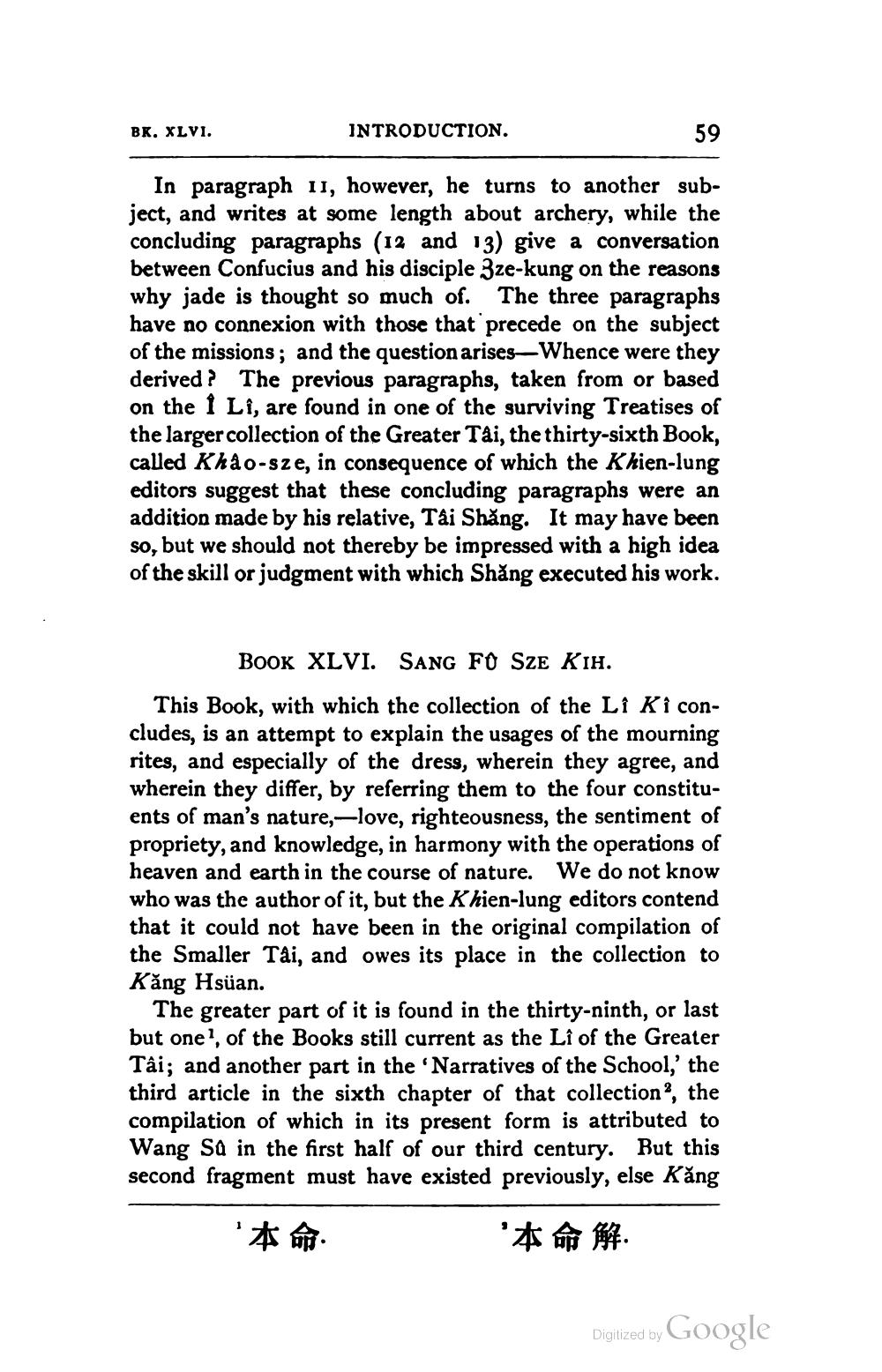________________
BK, XLVI.
INTRODUCTION.
59
In paragraph 11, however, he turns to another subject, and writes at some length about archery, while the concluding paragraphs (12 and 13) give a conversation between Confucius and his disciple Zze-kung on the reasons why jade is thought so much of. The three paragraphs have no connexion with those that precede on the subject of the missions; and the question arises—Whence were they derived? The previous paragraphs, taken from or based on the I Lî, are found in one of the surviving Treatises of the larger collection of the Greater Tài, the thirty-sixth Book, called Khâo-sze, in consequence of which the Khien-lung editors suggest that these concluding paragraphs were an addition made by his relative, Tai Shăng. It may have been so, but we should not thereby be impressed with a high idea of the skill or judgment with which Shăng executed his work.
BOOK XLVI. SANG FO SZE KIH. This Book, with which the collection of the Li Ki concludes, is an attempt to explain the usages of the mourning rites, and especially of the dress, wherein they agree, and wherein they differ, by referring them to the four constituents of man's nature,— love, righteousness, the sentiment of propriety, and knowledge, in harmony with the operations of heaven and earth in the course of nature. We do not know who was the author of it, but the Khien-lung editors contend that it could not have been in the original compilation of the Smaller Tai, and owes its place in the collection to Kăng Hsüan.
The greater part of it is found in the thirty-ninth, or last but one!, of the Books still current as the Lî of the Greater Tâi; and another part in the 'Narratives of the School,' the third article in the sixth chapter of that collection, the compilation of which in its present form is attributed to Wang Sa in the first half of our third century. But this second fragment must have existed previously, else Kăng
#
m.
'*
.
Digitized by Google




